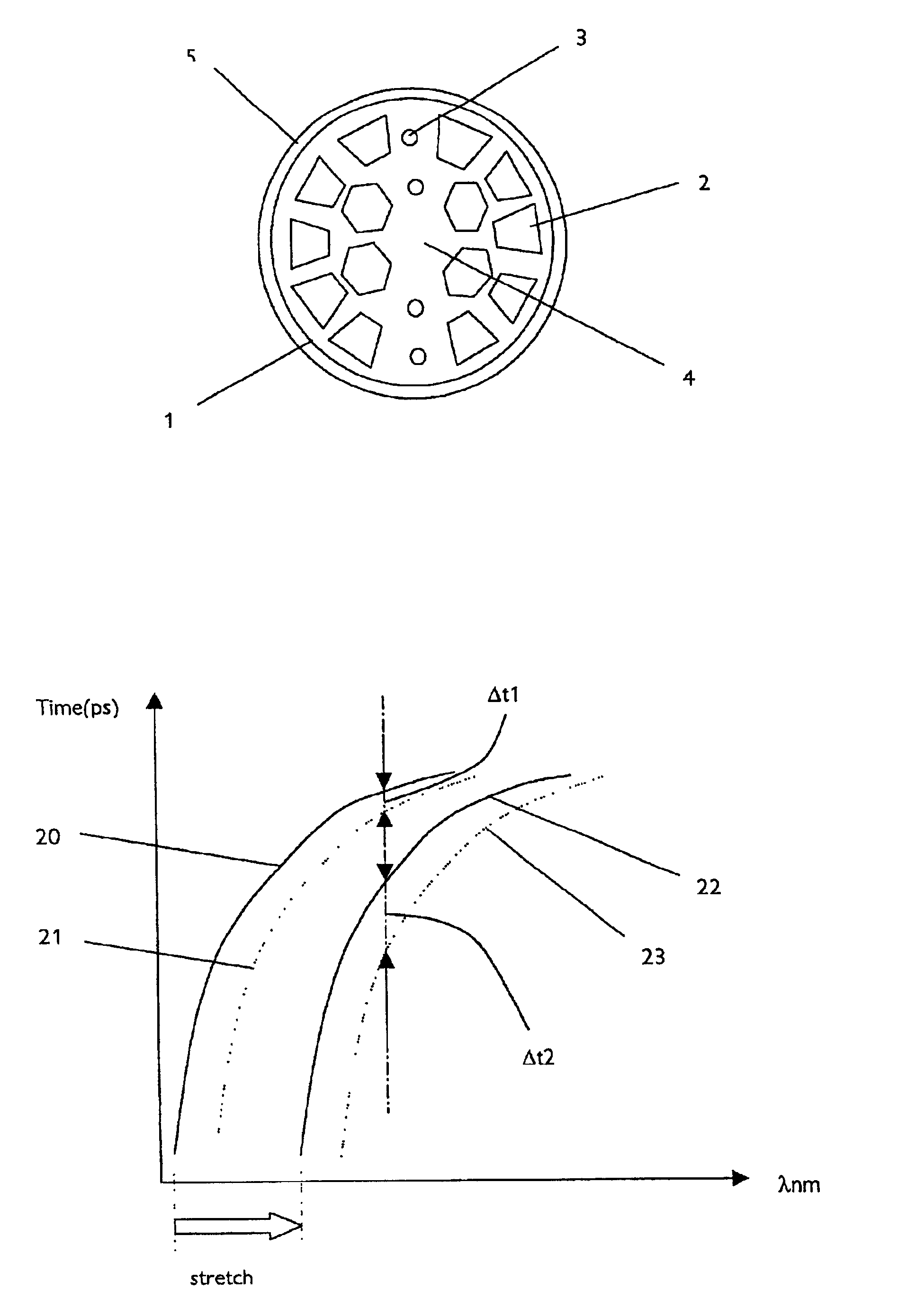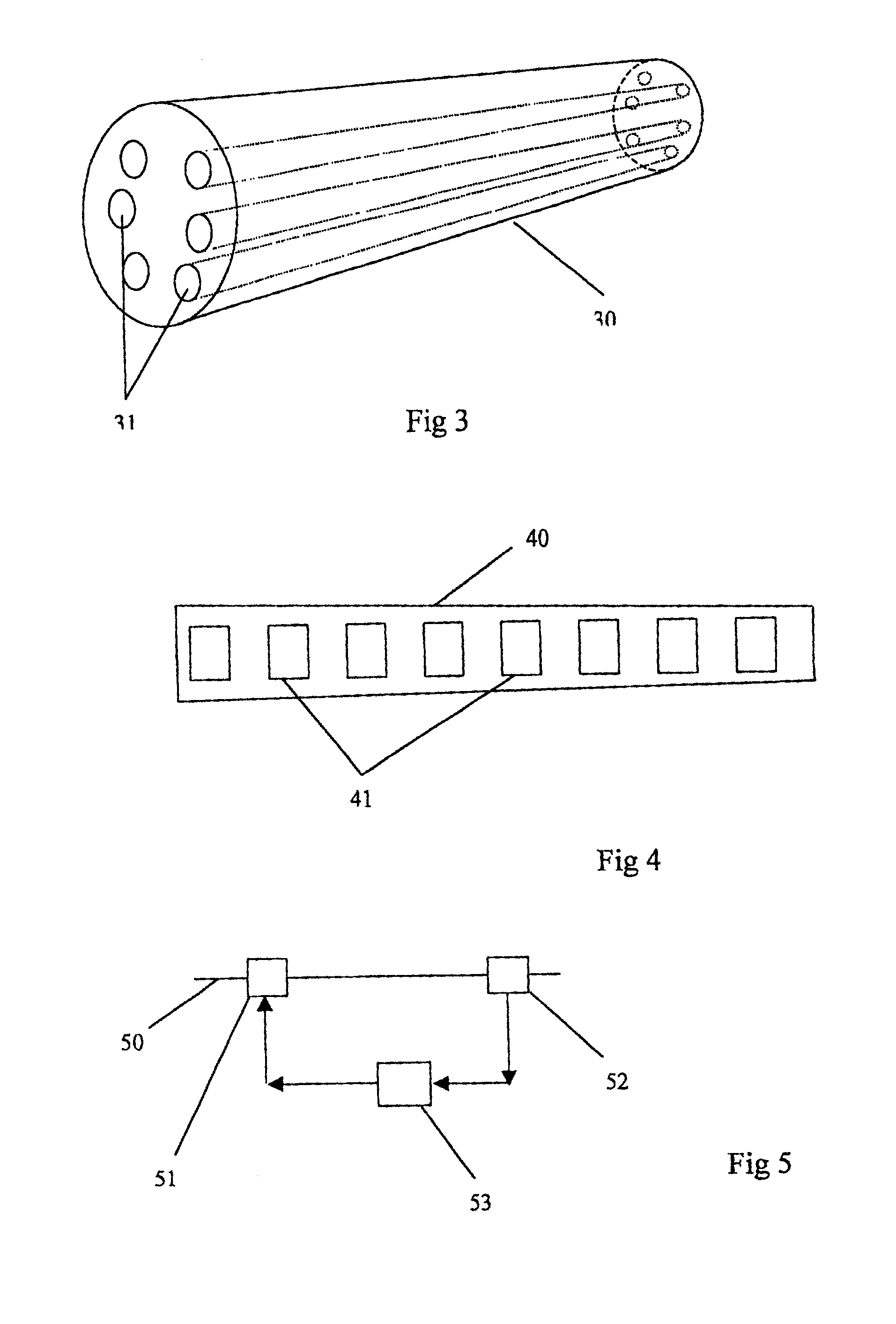Compensating for polarisation mode dispersion in optical transmission fibers
a technology of optical transmission fiber and polarisation mode, which is applied in the direction of multiplex communication, cladded optical fibre, instruments, etc., can solve the problems of unsuitable long-haul fibre link electrical approaches and rise to imperfections in the geometric circularity of the fibre, and achieve enhanced birefringence control
- Summary
- Abstract
- Description
- Claims
- Application Information
AI Technical Summary
Benefits of technology
Problems solved by technology
Method used
Image
Examples
Embodiment Construction
As already mentioned, polarisation mode dispersion arises from the different group velocities attained by orthogonal polarisation states arising from non-perfect circularity of the fibre cross-section and hence birefringence of the fibre. The present invention takes advantage of the effects of birefringence to compensate for the polarisation mode dispersion. It is therefore an advantage to the invention, but not a necessity, to use a fibre having an inherently high birefringence at the outset.
It is known that PCF and HF fibres are highly elliptical in cross section as a result of asymmetries introduced in the manufacturing process. This gives the fibres a higher inherent birefringence than in alternative so-called high birefringence fibres. PCF / HF fibres are made using a variety of techniques, primarily by systematically reducing a pre-form in size to form the geometrically micro-structured optical fibre. For example, the pre-form can be created by micro-drilling an optical pre-form...
PUM
 Login to View More
Login to View More Abstract
Description
Claims
Application Information
 Login to View More
Login to View More - R&D
- Intellectual Property
- Life Sciences
- Materials
- Tech Scout
- Unparalleled Data Quality
- Higher Quality Content
- 60% Fewer Hallucinations
Browse by: Latest US Patents, China's latest patents, Technical Efficacy Thesaurus, Application Domain, Technology Topic, Popular Technical Reports.
© 2025 PatSnap. All rights reserved.Legal|Privacy policy|Modern Slavery Act Transparency Statement|Sitemap|About US| Contact US: help@patsnap.com



